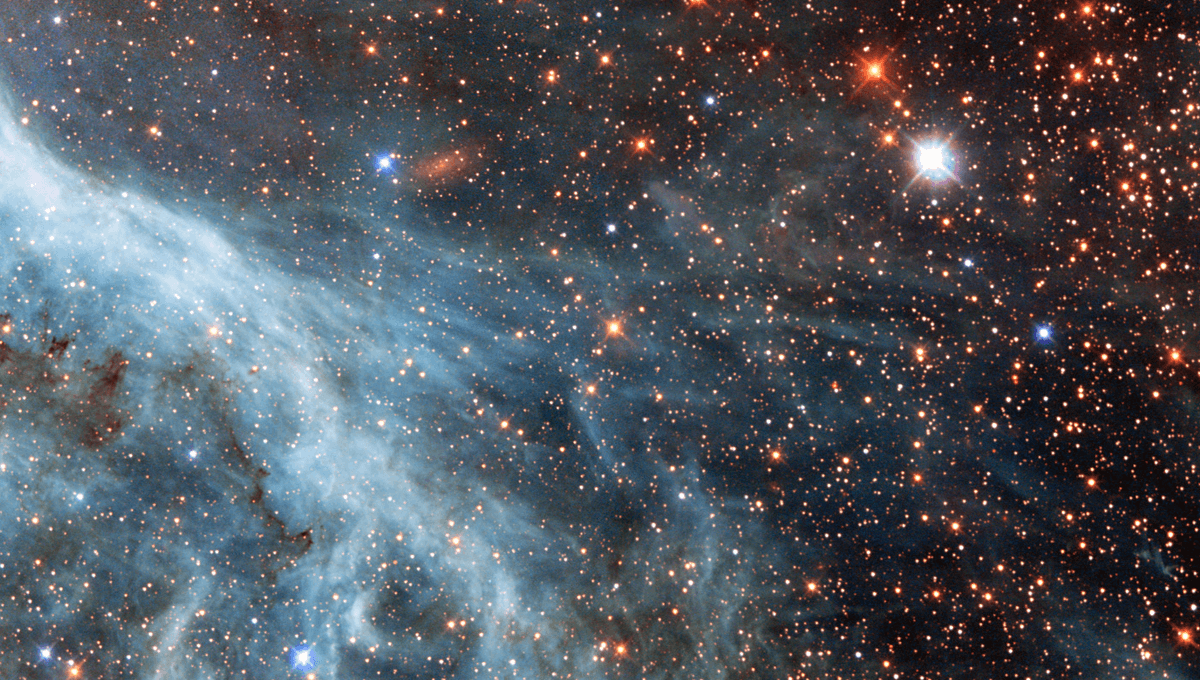
The transmission of deep notes within red giant stars can tell us their distances, providing a new way to measure the universe. That could prove useful to astronomers under any circumstances – but even more so when measurements of cosmic distances have put question marks over our models of the universe, which some consider a crisis in cosmology.
Astronomers agree the universe is expanding, and that the rate of expansion is increasing. However, the two main ways used to measure that growth produce conflicting results, known as the Hubble tension. Once, the error bars on each method were wide enough that there was some overlap. However, as new instruments have improved our precision, that has disappeared.
At least one of the measurements (or the conclusions we draw from it) must be wrong – but we don’t know which one, or why. Since so much else about the way we see the universe is derived from that rate of expansion, resolving the question has become a priority. Perhaps another method could act as a tiebreaker.
That’s the hope of a team of researchers who have published evidence showing a subcategory of red giant stars can provide an alternative measure of the universe’s expansion rate. Their studies have been too close to home to be used in that way yet, but the potential is there.
As stars near the end of their life, running out of hydrogen to fuse, they cool and puff up, becoming red giants. Eventually, they start fusing helium instead, and around the time of transition that they are known as “tip of the red giant branch” (TRGB) stars.
Many stars – particularly red giants – undergo variations in brightness, owing to giant sound waves bouncing back and forth within them. The researchers divided TRGB stars in the Magellanic Clouds into populations based on the length of time they take to vibrate. They found the group with slower vibrations have the consistent characteristics that make them valuable to astronomers, whereas those with higher notes are younger and more likely to be rich in metals.
“Younger red giant stars near the TRGB are a little less bright than their older cousins,” study author Richard Anderson, of the École Polytechnique Fédérale de Lausanne, said in a statement. “The acoustic oscillations that we observe as brightness fluctuations allow us to understand which type of star we’re dealing with: The older stars oscillate at lower frequency – just like a baritone sings with a deeper voice than a tenor!”
Knowing a star’s spot on the TRGB allows us to calculate its true brightness more precisely. Combining this with how much light we see allows us to measure the distance to TRGB stars in more remote galaxies. The potential to use TRGB stars to measure distance has been known for a while, but previous efforts have been plagued by uncertainty about true luminosity, and therefore considered less reliable than using Cepheid variables. Timing the oscillations could address this.
Measuring the movement of these stars, and the galaxies in which they exist, using their redshift is relatively easy. Matching the distance and the speed of movement provides a way to measure the universe’s growth.
“We found that the acoustic oscillations of red giant stars tell us how to best measure cosmic distances using the ‘tip of the red giant branch’ method,” Anderson said.
The use of objects of known intrinsic brightness is similar to one of the existing measures, which uses Type Ia supernovae. These are cherished by astronomers because their brightness at their peak is consistent, giving us a good idea of how bright they really are. Like the TRGB stars, matching this with our measured brightness and the redshift allows us to compare distance and expansion, providing one side of the Hubble tension. The conflicting results come from measurements of the cosmic background radiation.
TRGB stars are not as bright as supernovae, so we can’t use this method over equally enormous distances. On the other hand, they are more common and can be measured at our leisure, rather than only occurring briefly. Consequently, we can use TRGB stars to calibrate our measurements for closer galaxies in which supernovae have been observed.
If, as some suspect, the solution to the Hubble tension is that there is something wrong with our Type Ia supernovae observations or how we are interpreting these, this could be the way to find it out.
The study is published open access in the journal Astrophysical Journal Letters
Source Link: Red Giants With Deep Voices Could Resolve Cosmology’s Confusion